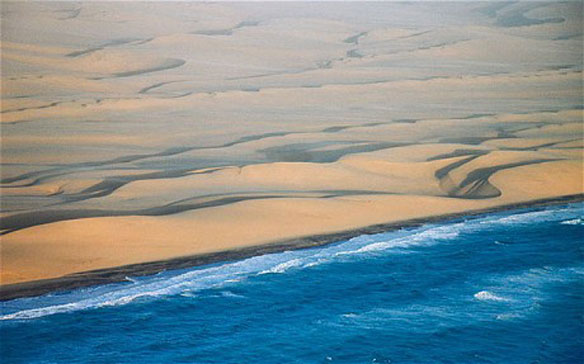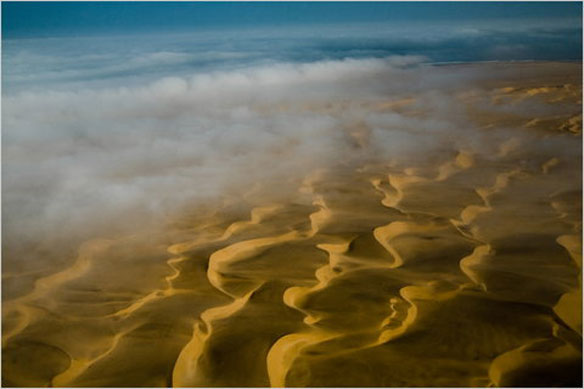
Skeleton Coast. Photo Source: Alamy
By Mark Rowe, The Telegraph UK
Namibia designates its entire 976-mile coastline a national park, consolidating several existing preserves into the 26.6 million-acre Namib-Skeleton Coast National Park.
With the declaration of the Dorob National Park on December 1, 2010, the last piece of the puzzle has finally been put in place, thus converting the total Namibian coast into the eighth largest protected area in the world and the largest park in Africa, called the Namib-Skeleton Coast National Park.
The Namib-Skeleton Coast National Park covers 26.6 million acres, making it larger than Portugal.
It stretches for 976 miles (1,570km), from the Kunene River, at the northern border with Angola, to the Orange River, on the border with South Africa, and is expected to be promoted as a unified destination. The protected coastline consolidates three national parks: Skeleton Coast, Namib-Naukluft and Sperrgebiet. The last is the site of Namibia’s diamond mines, which have long been closed to the public.
The national park does not stop at the national borders – at the southern end it connects with South Africa’s Richetersveld National Park, while in the north it is linked to Angola’s Iona National Park. Some coastal roads are good, particularly in Dorob National Park, but there is no pan-Namibian highway.
Historically, Namibia has been a trailblazer in using tourism to fund conservation, and has encouraged tribal communities to set up conservation areas, which they manage sustainably in order to keep poaching at bay and to attract tourism. “The aim of the new park is to rein in environmentally damaging activities and encourage tourism,” said Chris McIntyre, MD of the travel company Expert Africa.
Namibia is the driest country in southern Africa and its national parks are desert and savannah. In the desert wilderness of the Skeleton Coast, wildlife includes hyenas and abundant birds. Black rhino and desert elephants follow the area’s water courses, while small prides of lions have recently returned. Other highlights include African penguins and a vast colony of Cape fur seals.

Photo Source: Evelyn Hockstein / The New York Times
Uncontrolled Sand Mining Days Numbered in Namibia, in Coastal Care









